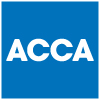3 min readAn Enterprise Management Incentive (“EMI”) scheme is an HMRC approved share option scheme aimed at smaller businesses to retain and motivates key employees. This guide will discuss what EMI schemes are and how they work.
So what is an EMI share options scheme ?
A share option gives the right to someone to purchase a share in a business at an agreed price at some point in the future. Typically, but not necessarily, this would be at the point of sale. The option holder must be an employee of the company and must spend at least 75% of their working time at that company.
Why would you consider using an EMI scheme ?
EMI schemes are becoming more and more popular with businesses with HMRC reporting a marked increase in the number of business implementing the schemes during 2017.
The main reasons businesses consider introducing EMI schemes are to motivate and retain key members of their workforce.
Employees will have a sense of ownership and will also benefit from the increased value of the business.
Is an EMI scheme complicated to implement ?
At the outset there is a procedure that needs to be followed which is likely to require the assistance of professional advisors.
Outline of Procedure:
- Prepare a market value valuation of the business and agree with HMRC
- Agree the terms of the scheme and set out in an option agreement
- Possibly minor amendments to the company’s Articles of Association
- Grant the options to the employees and get them to sign the option agreement
- Notify HMRC of the options that have been granted
Other than an annual declaration that has to be made to HM Revenue and Customs (HMRC) each year notifying them of any changes to the options that have been granted there is no on-going work required to maintain the scheme.
Much of the documentation that is mentioned above can be used for further granting of options at a later stage. It may be necessary to obtain a further agreement from HMRC as to the value of the shares.
What are the Tax Advantages of EMI share options ?
EMI schemes have a number of tax advantages attached to them over unapproved share options.
- Providing the options have an exercise price which was no less than the market value at the time of granting then there is no income tax or national insurance contributions payable.
- Once the options have been exercised and sold then the employee will pay capital gains tax on any gain. The gain should qualify for Entrepreneurs Relief which will mean they will be taxed at a rate of 10%. This is far less than if they were to pay income tax on the gain as they would do for unapproved options, which could be as much as 45% or possibly more if NICs were to become payable.
- Key employees are likely to stay with the company as the probability of a profitable capital return, motivates them. Employee’s motivation and interests are aligned towards the shareholders and the board when they have a tangible interest in the company’s ownership. As a result, everyone is focused on adding more shareholder value.
- Employees feel more valued in a share option scheme in the long term. Employees have an incentive to grow of the business and make themselves more accountable.
What will it cost me ?
Typically to implement an EMI scheme will cost around £2,500 to £3,000 plus VAT. This may vary depending on how many employees are to be included in the scheme.
What are the downsides of an EMI scheme ?
If the trigger point for exercising the options is based around the sale of a business and the owner subsequently decides not to sell this can act as a demotivator for employees as the scheme may no longer be fit for purpose.
There are a number of disqualifying events laid down by HMRC which could affect the tax status of the scheme. Whilst in most cases these may not be relevant, consideration needs to be given to them when making some business decisions.
The initial setup costs are high if options are only going to be granted to a small number of employees.
How we can help ?
As an accounting firm, we are able to provide a wide range of services tailored to your particular industry. With over 40 years experience our team at Loucas has set up many EMI schemes for a variety of businesses in numerous business sectors. We have a dedicated team to ensure that you are guided though share option schemes with ease.
We believe by staying up to date with not only current but changing legislation and industry news we are better placed to help our clients and their businesses succeed.
If you would like to discuss you options with EMI share option schemes or how Loucas can assist you please do not hesitate to contact us.

Further Information
The information contained in this publication has been prepared for general guidance and is not intended as advice. Whilst every care is taken to ensure the accuracy of the information, no responsibility can be accepted by Loucas for any loss resulting from acting or refraining from acting as a result of any material in this publication. The information in this publication is not designed as a substitute for seeking professional advice.
Designed by Freepik





